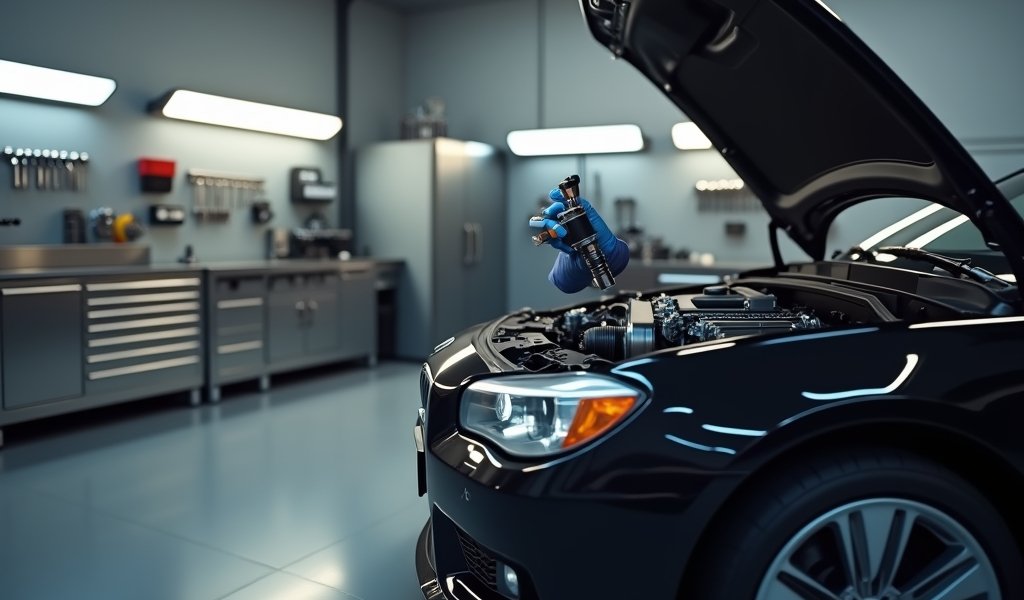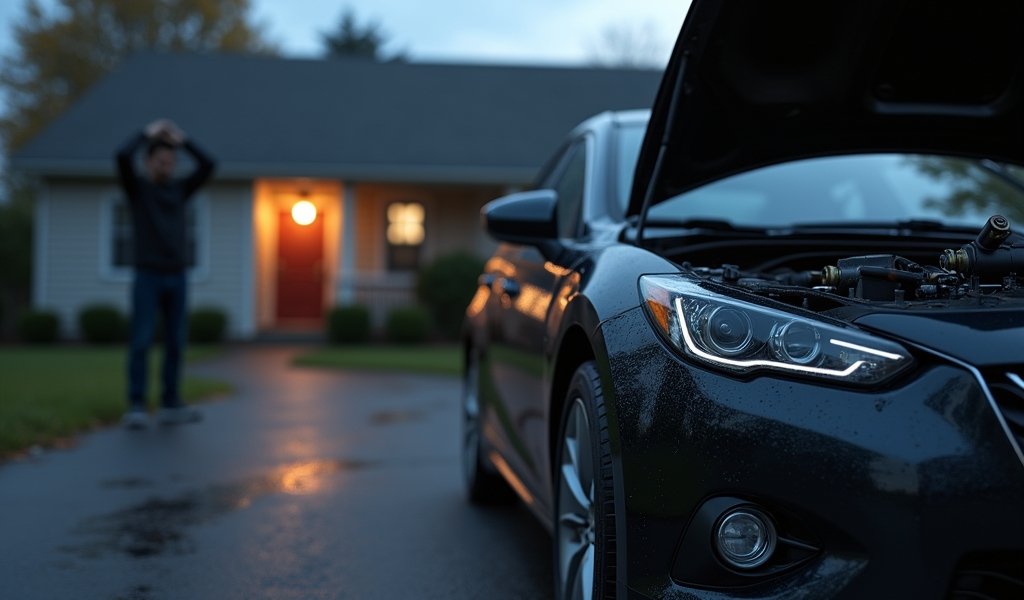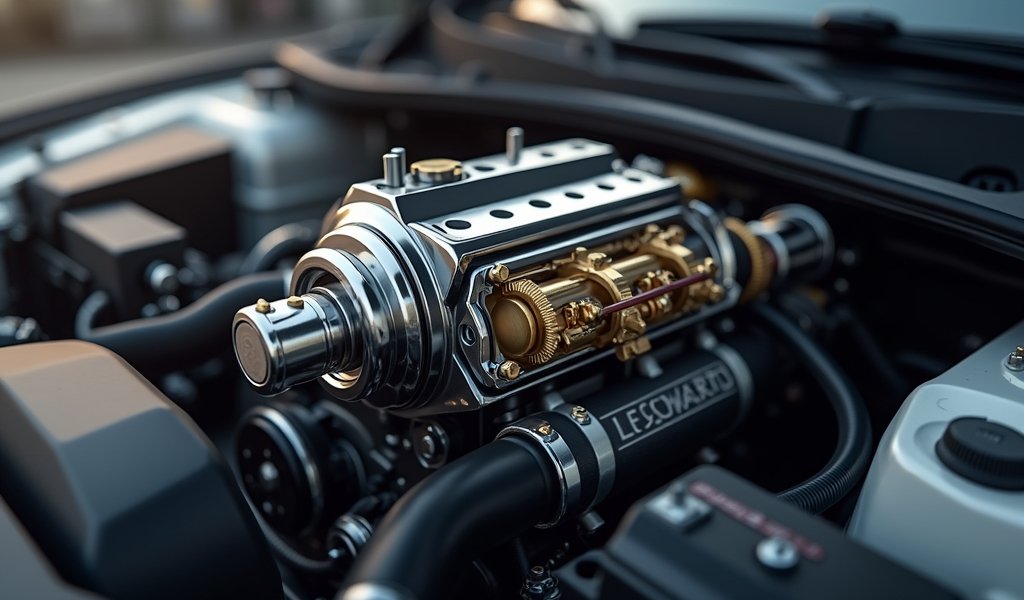Overview
The camshaft position actuator solenoid is a small but critical engine component that controls valve timing for better performance and efficiency, with symptoms of failure including rough idle, reduced power, and check engine lights. Regular oil changes with the correct oil type are essential for preventing solenoid problems, while replacement costs range from $30-150 for DIY repairs to $200-500 for professional service.
Table of Contents
- Understanding the Camshaft Position Actuator Solenoid
- How It Works: The Magic Behind the Scenes
- Common Symptoms of a Failing Camshaft Position Actuator Solenoid
- Diagnosing Issues: Don’t Guess, Know for Sure
- Repair Tips: Fixing It Right the First Time
- DIY Replacement: Step-by-Step Guide
- Preventive Maintenance: Keep That Solenoid Happy
- Cost Considerations: Saving Money Without Cutting Corners
- Conclusion
- Frequently Asked Questions
Understanding the Camshaft Position Actuator Solenoid
Let’s talk about that little gadget that’s causing you big headaches – the camshaft position actuator solenoid. It might sound like something from a sci-fi movie, but I promise it’s a real part in your car that does really important stuff. Think of it as the traffic cop for your engine’s valves, telling them exactly when to open and close.
I remember the first time I diagnosed a bad solenoid on a customer’s Chevy. The poor guy came in complaining that his car felt like it was “hiccupping” at stoplights. His face when I showed him this tiny part that was causing all his troubles? Priceless. “That little thing?” he asked. Yep, that little thing.
In simple terms, the camshaft position actuator solenoid controls the timing of your engine’s camshaft. It helps your car get better gas mileage, make more power, and run cleaner. Without it working right, your engine might run rough, use more gas, or even damage itself over time.
This solenoid is a key player in your car’s variable valve timing system, which is like having a smart assistant for your engine that adjusts things on the fly. According to a study by the Society of Automotive Engineers, vehicles with properly functioning variable valve timing systems can see up to a 5% improvement in fuel economy compared to those without this technology.
How It Works: The Magic Behind the Scenes
Let me break down how this little wizard works without getting too techy. Imagine your engine as a band with different instruments. The camshaft position actuator solenoid is like the conductor, making sure everyone plays at exactly the right time.
When you start your car, your engine’s computer (the ECU) sends signals to this solenoid. These signals tell it to let oil flow to the camshaft actuator, which then adjusts the camshaft timing. It’s like opening and closing gates to control the flow of water – except instead of water, it’s controlling the flow of oil that moves the camshaft.
Here’s what happens in order:
- Your ECU determines the best timing based on how you’re driving
- It sends an electrical signal to the solenoid
- The solenoid opens or closes, controlling oil flow
- The oil pressure moves the camshaft actuator
- The camshaft timing changes, making your engine run better for that specific situation
This whole dance happens many times per minute as you drive, constantly fine-tuning your engine’s performance. Pretty cool for something about the size of a large thimble, right?
The camshaft timing adjustment is critical because it affects when the valves in your engine open and close relative to the piston position. When these components work together in harmony, your engine can produce more power while using less fuel, as explained by experts at Engine Labs.

Common Symptoms of a Failing Camshaft Position Actuator Solenoid
How do you know when this little part is throwing a tantrum? Your car has ways of telling you, trust me. Last month, I had a customer named Mike who came in saying his Ford F-150 was “acting like it had too much coffee” – perfect description of a solenoid issue!
Here are the telltale signs your camshaft position actuator solenoid might be waving the white flag:
- Check Engine Light – That annoying little glow on your dash might be your first clue
- Poor Idle – If your car shakes, vibrates, or seems “nervous” at stoplights
- Reduced Power – Your car feels sluggish, like it’s dragging an invisible anchor
- Worse Gas Mileage – Suddenly you’re visiting the pump more often
- Hard Starting – Your car takes longer to start or struggles to stay running
- Strange Noises – Clicking, ticking, or rattling from the engine area
- Stalling – In severe cases, your engine might just give up and quit
I once had a Nissan in the shop that displayed every single one of these symptoms. The owner thought he needed a new engine! His face lit up when I told him it might just be a $100 part. Sometimes the scariest symptoms have the simplest fixes.
These symptoms can sometimes mimic other issues, which is why proper diagnosis is essential. In fact, research shows that misdiagnosed engine problems lead to an estimated $1.5 billion in unnecessary repairs annually in the United States alone, according to data from the Car Care Council.
Keep in mind that these symptoms can get worse over time. A slightly rough idle today could become a no-start situation next month. If your camshaft timing chain has stretch issues too, the problems can compound quickly.
Diagnosing Issues: Don’t Guess, Know for Sure
Before you start replacing parts willy-nilly (my grandfather’s favorite term), let’s talk about how to properly diagnose a camshaft position actuator solenoid problem. This is where I see folks waste the most money – throwing parts at a problem without really knowing what’s wrong.
First step: Get those error codes. You’ll need an OBD-II scanner, which you can buy for around $30-100, borrow from a friend, or head to most auto parts stores where they’ll scan for free. Look for codes like P0010, P0011, P0013, and friends in that family – these directly point to camshaft position actuator circuit issues.
Story time: Last year, I had a customer who spent nearly $800 replacing her camshaft position sensors because a quick internet search matched her symptoms. Turns out, it was just a loose electrical connector on the solenoid. Five-minute fix, zero parts needed. Don’t be like her!
Here’s my diagnostic process:
- Scan for codes (write them down!)
- Check the solenoid’s electrical connector for damage or looseness
- Test the solenoid’s resistance with a multimeter (if you have one)
- Check oil level and condition (dirty oil can clog solenoids)
- Listen for abnormal timing chain noise (a related issue)
The resistance test is super helpful if you can do it. Most solenoids should read between 5-15 ohms. If yours reads as an open circuit (infinite resistance) or a short (near zero), you’ve found your culprit.
Remember, your car’s crankshaft position sensor works closely with the camshaft systems. Sometimes what seems like a camshaft issue could actually be related to the crankshaft position sensor. It’s all interconnected, like a mechanical family reunion where everyone has to get along.
Repair Tips: Fixing It Right the First Time
Alright, so you’ve diagnosed the problem and confirmed it’s your camshaft position actuator solenoid. What now? Let me share some professional tips I’ve learned over 20 years of fixing these things.
First off, get the right part! I can’t stress this enough. Vehicle-specific solenoids aren’t like light bulbs where “close enough” works. The difference between OEM (Original Equipment Manufacturer) and aftermarket parts can be significant here. I generally recommend OEM for solenoids unless you’re using a premium aftermarket brand.
A funny thing happened at our shop last summer – a customer brought in his own part he bought online for 70% off retail price. “What a bargain!” he thought. After we installed it, the car ran worse than before. Turns out, he’d bought a solenoid for a 4-cylinder model, but his car had the V6. Oops!
Here are my pro tips for a successful repair:
- Always compare the new part to the old one before installing
- Clean the mounting surface thoroughly
- Apply a tiny dab of clean motor oil to the O-ring (if present) for easier installation
- Torque bolts to specification – too tight can crack housings, too loose will leak
- Double-check electrical connections for proper seating
- Clear error codes after replacement
- Change your oil if it’s dirty (prevents immediate clogging of the new solenoid)
According to a survey by the Automotive Service Association, improper installation accounts for approximately 14% of comeback repairs in professional shops. That number is likely much higher for DIY jobs. Taking your time and doing it right means you won’t be doing it again next month.

DIY Replacement: Step-by-Step Guide
Feeling brave? Many camshaft position actuator solenoid replacements are actually pretty DIY-friendly. I’d rate this job about a 4 out of 10 on the difficulty scale for most vehicles. That said, some manufacturers seem to have designed their engines specifically to make mechanics contort like yoga instructors to reach these parts.
Here’s your step-by-step guide to replacing this solenoid yourself:
- Gather tools: socket set, ratchet, extensions, and maybe a swivel socket for tricky angles
- Make sure the engine is COLD (seriously, hot oil burns are no joke)
- Locate your solenoid(s) – check your repair manual or online videos for your specific model
- Disconnect the negative battery terminal (safety first!)
- Unplug the electrical connector from the solenoid (usually has a clip to press)
- Remove mounting bolts (usually 8mm or 10mm)
- Carefully extract the old solenoid – it might be stuck from heat cycling
- Compare new and old parts to ensure they match
- Install the new solenoid with a new gasket/O-ring if provided
- Tighten bolts to proper torque (typically 8-10 ft-lbs, but check specs for your car)
- Reconnect the electrical connector until it clicks
- Reconnect the battery
- Clear codes and test drive
I once helped my neighbor change the solenoid on his Toyota Camry. We had everything laid out perfectly, replacement going smoothly… until his cat jumped up and knocked the new solenoid right into the garden. Took us 30 minutes with flashlights to find it hiding under a bush. Moral of the story: Close the garage door and banish pets during repair time!
Remember that some vehicles have multiple solenoids – one for each camshaft. If your car has dual overhead cams (DOHC), you might have an intake and exhaust solenoid on each bank. Online video tutorials specific to your make and model can be incredibly helpful for visualizing the process before you start.
Preventive Maintenance: Keep That Solenoid Happy
Now that we’ve covered fixing problems, let’s talk about preventing them. The good news? Keeping your camshaft position actuator solenoid healthy isn’t rocket science. The bad news? Most folks ignore the simple stuff until it’s too late.
The single biggest favor you can do for your solenoid is regular oil changes with the right oil. This part bathes in oil all day long, and dirty oil is like feeding sand to a precision watch. I’ve cut open failed solenoids and found them packed with sludge that looks like black peanut butter – not appetizing and definitely not good for performance.
My brother-in-law once bragged about going 25,000 miles between oil changes on his Chevy Silverado. He stopped bragging when his truck needed $1,800 in repairs for, you guessed it, camshaft actuator issues. Regular $50 oil changes would have saved him big time.
Here’s your solenoid preservation plan:
- Follow manufacturer’s oil change intervals (or sooner in severe conditions)
- Use the correct oil weight and type specified for your vehicle
- Replace your oil filter with every oil change
- Address check engine lights promptly before small issues become big ones
- Consider an engine flush if you’ve had irregular oil change history
- Avoid extended periods of idling (hard on oil and solenoids)
According to a study published in the International Journal of Automotive Technology, vehicles that received regular oil changes at recommended intervals showed 78% fewer variable valve timing system failures compared to vehicles with irregular maintenance.
Think of oil as both food and medicine for your engine. Quality oil doesn’t just lubricate – it cleans, cools, and protects. Those few extra dollars for good synthetic oil might save you hundreds in solenoid replacements down the road.
Cost Considerations: Saving Money Without Cutting Corners
Let’s talk money – everyone’s favorite subject when it comes to car repairs! The cost of fixing camshaft position actuator solenoid issues varies widely depending on your vehicle and whether you DIY or go to a shop.
For parts alone, solenoids typically run between $30-150 each, depending on your vehicle. Some luxury cars (looking at you, German manufacturers) can be more. Labor at shops usually runs 1-2 hours at whatever their hourly rate is – typically $90-150 per hour depending on your location.
I had a customer with a Ford F-150 who got quoted $380 at a dealership for a solenoid replacement. He did it himself for $75 in parts and about an hour of his Saturday morning. His wife used the savings to buy concert tickets – now that’s a win-win!
Here are some ways to save without compromising quality:
- Get multiple quotes from different shops
- Consider independent shops over dealerships for out-of-warranty vehicles
- Look for online coupons or seasonal specials at local shops
- Buy OEM parts yourself online (often cheaper) and ask if a shop will install them
- DIY the replacement if you’re comfortable with basic tools
Warning story: I’ve seen people try to clean and reinstall old solenoids to save money. This rarely works and often leads to repeat failures within weeks. The solenoid’s internal components wear out electrically and mechanically – no amount of cleaning fixes that.
The American Automobile Association (AAA) estimates that proper maintenance can save an average driver over $1,000 per year in emergency repairs and lost time. Preventative maintenance isn’t an expense – it’s an investment with excellent returns.
Conclusion
We’ve covered a lot of ground about camshaft position actuator solenoids – from what they do to how they fail, and from diagnosis to repair. This small but mighty part plays a huge role in your engine’s performance, efficiency, and longevity.
Remember, the warning signs of a failing solenoid – rough idle, poor performance, check engine lights – shouldn’t be ignored. The good news is that fixing solenoid issues is often simpler and less expensive than many other engine problems.
Whether you choose the DIY route or leave it to professionals, understanding what’s happening under your hood empowers you to make better decisions about your vehicle’s care. Regular maintenance with quality oil remains your best defense against solenoid problems.
At our shop, we believe informed customers make better decisions. I hope this guide helps you tackle solenoid issues with confidence, save some money, and keep your engine running smoothly for many miles to come. Your camshaft position actuator solenoid may be small, but giving it the attention it deserves pays big dividends in vehicle performance and reliability.
Frequently Asked Questions
How long does a camshaft position actuator solenoid typically last?
Most solenoids last between 80,000 and 150,000 miles under normal conditions. Regular oil changes with the correct oil type can significantly extend this lifespan.
Can I drive with a bad camshaft position actuator solenoid?
You can drive short distances, but it’s not recommended for extended periods. A failing solenoid can cause reduced fuel economy, engine damage, and eventually complete breakdown.
How much does it cost to replace a camshaft position actuator solenoid?
DIY replacement costs $30-150 for parts depending on your vehicle. Professional replacement typically runs $200-500 including parts and labor.
Will a bad solenoid always trigger a check engine light?
In most modern vehicles, yes, but not always immediately. Some minor solenoid issues may cause driveability problems before triggering the light.
Can dirty oil cause camshaft position actuator solenoid failure?
Absolutely. Dirty oil is one of the leading causes of solenoid failure. The tiny passages can become clogged with sludge, preventing proper operation.

